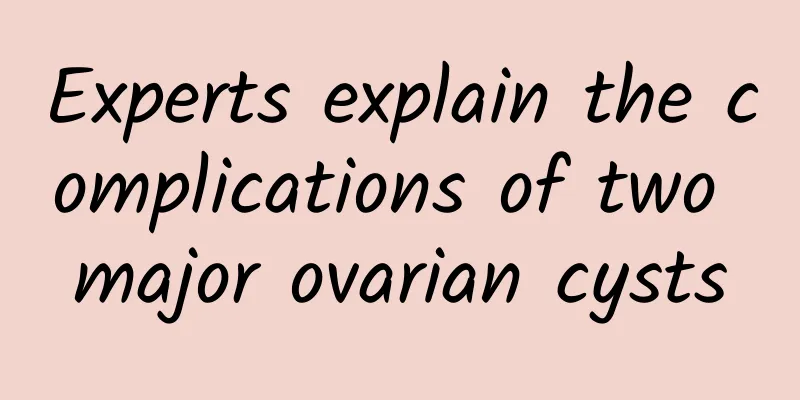Experts explain the complications of two major ovarian cysts

|
The complications of ovarian cysts are relatively common, which brings more serious harm to patients with ovarian cysts and is very unfavorable to the treatment and recovery of patients. So what are the common complications of ovarian cysts ? Let's talk about the common complications of ovarian cysts. Common complications of ovarian cysts include: 1. Ovarian tumor It is the most common complication of ovarian cysts. Although the ovaries are small in size, they are the organs where tumors are most likely to occur; the number of tumor types is also the highest among all organs in the body. Ovarian cysts are common gynecological diseases that can occur at any age, but are more common in women of childbearing age. Since the ovaries are located in the pelvic cavity, they cannot be directly observed, and there are no symptoms in the early stages. There is a lack of good early diagnosis and differentiation methods. Once a malignant tumor is discovered, it is often an advanced lesion. Therefore, to date, the 5-year survival rate of ovarian cancer is still only 25%-30%, making it the most threatening disease among gynecological tumors. 2. Tumor pedicle torsion About 10% of ovarian tumors are subject to torsion, which is also a common complication of ovarian cysts. The conditions for the occurrence of ovarian tumor pedicle torsion are that the tumor pedicle is long and the tumor is as big as a fist or a fetal head, there is no adhesion to the surrounding tissues, and the tumor is easy to move in the abdominal cavity. Cystic teratomas, mucinous and serous cystadenomas are most likely to have pedicle torsion. The pedicles of these tumors are generally long and the center of gravity is biased to one side. The tumor body is easily affected by intestinal peristalsis or changes in body position and rotates. Many patients complain that before the onset of pain, they had activities such as getting up or bending over, but sometimes the patient woke up due to the onset of pain (it may also be caused by turning over in sleep or intestinal peristalsis). If the patient with ovarian tumor is pregnant, the tumor pedicle torsion often occurs in the first half of pregnancy or after delivery. The above is an introduction to the common complications of ovarian cysts. I believe everyone has some understanding of this. For more questions about the complications of ovarian cysts, you can consult our online experts, who will answer them in detail. |
<<: Experts answer common hazards of uterine fibroids
>>: Experts briefly analyze the dietary considerations for abortion
Recommend
How can patients with uterine fibroids recover after surgery?
How to recover after uterine fibroid surgery? Ute...
Excessive weight loss exercise can easily lead to amenorrhea
Amenorrhea patients often have headaches, visual ...
Is uterine fluid harmful to women?
The uterus is a very important reproductive organ...
What causes cervical erosion?
The occurrence of cervical erosion is mainly rela...
How to prevent ovarian cysts?
Ovarian cysts are more common in recent years. Ov...
Do you know the signs of ectopic pregnancy?
What are the signs of ectopic pregnancy? Ectopic ...
Will premature sexual life induce cervicitis? Daily care methods for cervicitis
Cervicitis is a common gynecological inflammation...
Symptoms of early vulvar leukoplakia in women: hyperkeratosis
Since the symptoms of vulvar leukoplakia can occu...
A review of the best sweet soups to warm you up in winter! Nutritionists teach you how to eat sweets without getting fat
During the winter solstice, people eat glutinous ...
What are the obvious symptoms of pelvic inflammatory disease?
Obvious symptoms of PID include lower abdominal p...
Can cervical precancerous lesions be treated with medicine?
Everyone is familiar with cervical precancerous l...
Can women with cervical erosion eat donkey-hide gelatin? Dietary taboos for women with cervical erosion
Some women will have many gynecological diseases ...
Menstruation half a month earlier
Menstruation half a month earlier Menstruation ha...
How can women prevent cervicitis in their daily life?
Cervicitis is a common gynecological disease in o...
How to treat uterine fibroids? How to treat uterine fibroids conservatively
Speaking of uterine fibroids, I believe most fema...









